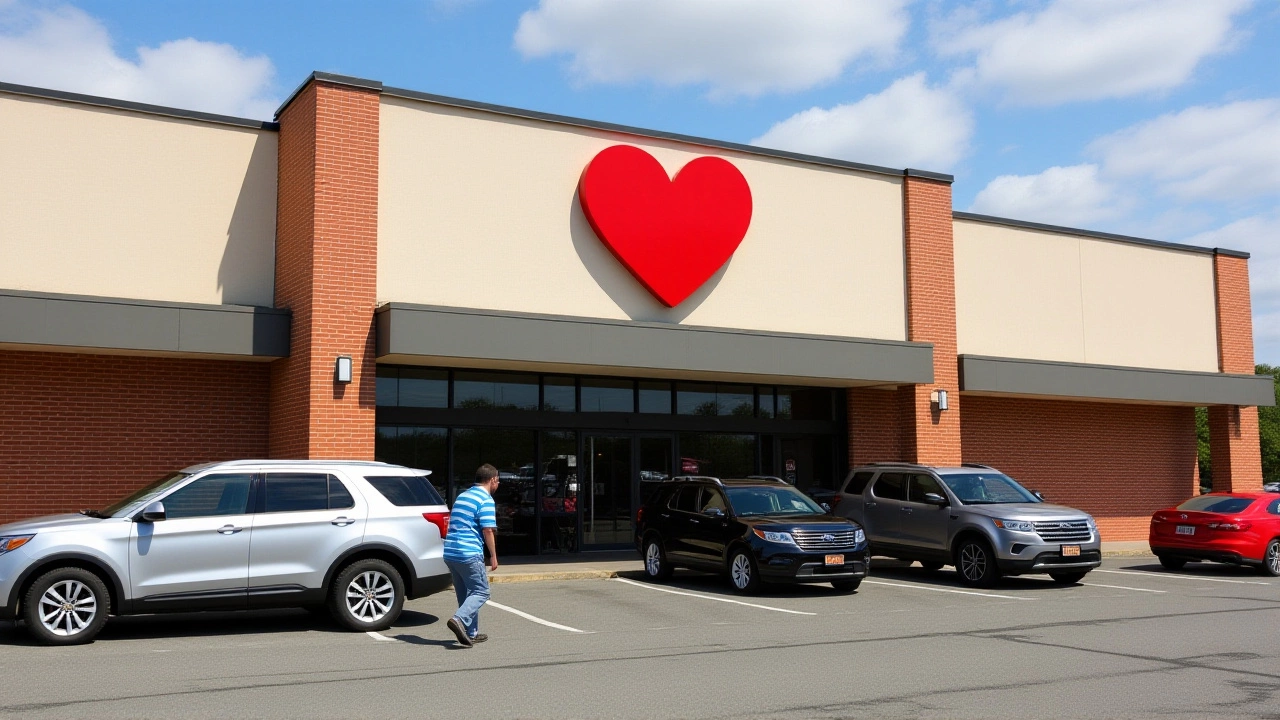While major retailers like Rite Aid, Big Lots, and Joann shutter stores across the country, Burlington Stores is doing the opposite — opening five new locations in New York State this fall, signaling a bold counter-trend in American retail. The off-price giant, headquartered in Cinnaminson, New Jersey, will open stores in Brooklyn, Massapequa, Irondequoit, Rego Park, and Bay Shore between September 5 and October 10, 2025. This push increases Burlington’s presence in New York from 72 to 77 stores, even as competitors shrink. The twist? It’s not just about opening doors — it’s about redefining what a discount store looks like.
Strategic Footprint: Where and When
The rollout is precise, almost surgical. On September 5, 2025, the first new store opens at 946 Kings Highway in Brooklyn, targeting dense urban shoppers. Then, on September 12, two more open simultaneously: one at 5520 Sunrise Highway in Massapequa, Long Island, and another at St. Georges Crossing in Woodbridge, New Jersey. The latter replaces a former P.C. Richard & Sons location, a strategic move that avoids new construction. Two more follow on October 3 — one at 2255 East Ridge Road in Irondequoit, near Rochester, and another at 61-35 Junction Blvd., Suite A302, in Rego Park, Queens. The final New York opening arrives on October 10 at 1851 Sunrise Highway in Bay Shore, Long Island.
Meanwhile, in New Jersey, Burlington’s second October 10 opening takes over the former Big Lots space at Columbia Park Center in North Bergen. The property, owned by Madison International Realty, already hosts Five Below, Old Navy, and ShopRite — proving that off-price retailers thrive where other chains have failed.
The 25,000-Square-Foot Revolution
These aren’t your parents’ Burlington Coat Factory stores. The new openings — and half of Burlington’s existing 1,138 locations — have been converted to a streamlined 25,000-square-foot format. That’s roughly 40% smaller than traditional big-box stores, making them cheaper to operate and easier to slot into strip malls, former bank branches, or vacant big-box shells. The company began this transition in 2023, and by the end of 2026, nearly all locations are expected to follow suit. It’s a smart pivot: smaller footprints mean lower rent, reduced staffing costs, and faster inventory turnover.
And the timing couldn’t be better. With bankruptcies leaving behind prime retail real estate — like Joann Fabrics’ 1,000+ locations and Bed Bath & Beyond’s empty storefronts — Burlington is snapping up properties like a bargain hunter at a clearance sale. In North Bergen, they moved into Big Lots’ old spot. In Woodbridge, they took over a former electronics chain. No new construction needed. Just a fresh coat of paint, new signage, and a smarter layout.
Why This Matters in a Dying Retail Landscape
While Kohl’s, Walgreens, and Party City announce closures, Burlington is adding nearly 100 new stores across 19 states in 2025 alone. That’s not growth — it’s a renaissance. The company’s strategy is simple: buy low, move fast, and serve value-conscious shoppers who still want name-brand apparel, home goods, and footwear — but at 20% to 60% off. And they’re doing it without the overhead of sprawling superstores.
What’s more, their expansion isn’t limited to the Northeast. Connecticut will get two new stores in October. Pennsylvania and New Jersey each add one more in September and another in October. Texas, which leads the nation with 135 locations, remains the anchor. But the real story is in the suburbs and urban cores where other retailers have given up.
What’s Next? The 500-Store Goal
Burlington’s ambition doesn’t stop at 2025. The company aims to open 500 new stores by the end of 2028. That’s more than doubling its current footprint. And with the new store format cutting operating costs by an estimated 25%, the math works. Analysts say Burlington’s model is the rare retail success story that doesn’t rely on e-commerce — it thrives on physical presence, smart location choices, and aggressive pricing.
It’s also worth noting: these new stores are designed to feel less like a warehouse and more like a curated boutique. Shelves are tighter, lighting is brighter, and product categories are grouped intuitively. Shoppers aren’t just looking for deals — they’re looking for a pleasant experience. And Burlington’s redesign delivers that.
Behind the Numbers
- Current total stores: 1,138 across the U.S. and Puerto Rico
- New York stores before 2025: 72 → after 2025: 77
- New Jersey stores: 52 → will reach 54 by October 2025
- Store format conversion: 50% complete; full rollout by end of 2026
- 2025 expansion: 98+ new stores across 19 states
- Target for 2028: 500 additional stores
Compare that to the 1,200+ store closures announced by major chains since 2023. Burlington isn’t just surviving the retail apocalypse — it’s building on the ruins.
Frequently Asked Questions
How is Burlington Stores different from other discount retailers like TJ Maxx or Ross?
Burlington operates with a more aggressive acquisition strategy, targeting bankrupt retail spaces rather than building new ones. Its 25,000-square-foot format is smaller and more efficient than TJ Maxx’s typical 45,000+ square feet, reducing overhead. Burlington also carries more home goods and children’s apparel, giving it a broader appeal than Ross, which focuses heavily on apparel.
Why is Burlington expanding while others are closing?
Burlington’s model thrives on economic uncertainty. As inflation pressures household budgets, shoppers flock to off-price retailers for name-brand discounts. The company’s low-cost store format, acquisition of vacated spaces, and lean operations allow it to turn a profit even in high-rent areas where others fail. Their growth isn’t luck — it’s a calculated response to consumer behavior.
What locations are getting the new 25,000-square-foot stores?
All five New York openings in 2025 and both New Jersey locations use the new format. Burlington has already converted half of its existing 1,138 stores to this model. The company prioritizes urban strip centers, suburban malls, and former big-box sites — places where smaller footprints make financial sense. Locations in Brooklyn, Rego Park, and North Bergen are prime examples of this strategy.
Is Burlington’s expansion sustainable?
Yes — for now. The company has secured long-term leases on prime, low-cost real estate left by bankrupt chains. Its inventory model, which relies on opportunistic buying of overstock and closeouts, keeps costs low. With 500 new stores planned by 2028, the key will be maintaining product variety and avoiding over-saturation. So far, sales per square foot remain strong, suggesting the model holds up.
How does this affect local economies?
The openings bring hundreds of new jobs — mostly part-time retail roles — to neighborhoods that lost anchor tenants. In North Bergen and Woodbridge, Burlington’s arrival has helped stabilize shopping centers that were losing foot traffic. Local governments benefit from increased property taxes and sales tax revenue. But some small retailers worry about competition, especially in areas with limited consumer spending.
Will Burlington expand beyond the Northeast?
Absolutely. While the 2025 focus is on the Northeast and Mid-Atlantic, Texas remains its largest market. The company is eyeing the Southeast and Midwest next, particularly states with high population growth and vacant retail space. Florida, Georgia, and Ohio are likely candidates for 2026 expansions, especially in areas where Bed Bath & Beyond or Linens ‘n Things once stood.





